Tanabata (七夕) is celebrated on July 7th every year. Based on a romantic Chinese legend “The Cowherd and the Weaver Girl”, Tanabata celebrates the annual reunion of two star-crossed lovers. In Japan, Tanabata is celebrated by making wishes upon the stars, festivals, and special decorations.
First Published: 2022/03/15
Updated : 2023/07/06
Table of Contents
- The Tanabata Story of Orihime and Hikoboshi
- How is Tanabata celebrated?
- Popular Tanabata Festivals in Japan (2023 Events)
七夕 (Tanabata) is based on China’s Qi Xi (Qi Xi = 七夕; same kanji) that celebrates the romantic legend of “The Cowherder and the Weaver Girl”. There are many variations of this legend across Asia but the gist of the story is the same. Let’s have a look at Japan’s version of the story below.
The Tanabata Story of Orihime and Hikoboshi

A weaver girl, Orihime and a cowherder, Hikoboshi fell in love and got married. They neglected their duties after marriage which angered Orihime’s father. He punished them by separating them using the Milky Way. So saddened by this, the both of them stopped working altogether. Taking pity on them, Orihime’s father imposed a condition - if they worked hard, he would allow them to meet once a year on the night of Tanabata. They both worked hard in order to meet each other again. On the night of Tanabata, magpies entrusted by Orihime’s father carried them across the Milky Way on its back, allowing them to enjoy their annual reunion.
For the longer version of the story:
Once upon a time, there was a weaver girl, Orihime (織姫) and a cowherder, Hikoboshi (彦星). Orihime was the beloved daughter of the Heavenly Father, Tentei (天帝). Orihime’s duty was to weave cloth which were used to made kimono for the Gods, she diligently carried out her work by the Amanogawa (天の川) - the Milky Way.
Feeling sorry for his poor daughter who worked hard and did not have a lover, Tentei arranged for Orihime to meet with Hikoboshi, a cowherder who lived across the Amanogawa. They fell in love and were married.
After they were wed, the happy couple were so infatuated with each other that they started to neglect their duties - Orihime stopped weaving cloth so the Gods kimonos became worn, and Hikoboshi’s cows ran rampant and became sick.
Tentei became angry and separated the couple with the Amanogawa. Orihime and Hikoboshi, so saddened by their separation, cried everyday and could not work altogether. Feeling sorry for them, Tentei imposed a condition - work hard and I will allow the both of you to meet on the night of the 7th day of the 7th month.
Orihime and Hikoboshi worked hard in order to meet each other again. Every 7th day of the 7th month, aka the night of Tanabata, magpies under order of Tentei carried the couple on their backs across the Amanogawa so that they may be reunited.
How is the original Chinese legend different from the Tanabata story?
For those curious, here are the key differences between both stories:
1. Their Names
Orihime (織姫) = Zhi Nü (織女) ; Hikoboshi (彦星) = Niu Lang (牛郎)
2. How They Met
In the Tanabata story, Orihime and Hikoboshi were arranged to meet by Orihime’s father. However, in the Chinese legend, theirs was a sudden encounter and they got married without anyone knowing, and even had children!
3. Forbidden Romance
In the Chinese legend, the romance between Zhi Nü and Niu Lang was forbidden because she was a deity and he was a common human. When the Emperor of Heaven found out, he was engorged and separated them with the Milky Way.
4. Magpie Bridge
In the Tanbata story, Orihime and Hikoboshi rode on the magpie’s backs, and the magpies were instructed by Orihime’s father. As for the Chinese legend, the magpies formed a bridge across the Milky Way to reunite the lovers. Moreover, they did so because they were touched by the couple’s love for one another.
Writer's Pick
How is Tanabata celebrated?

In China, a celebration called Qi Xi (七夕) or Qi Qiao Jie (乞巧节), is held to celebrate the legend. Chinese customs include eating special Qi Xi food, stargazing, praying to Zhi Nü for good luck, and couples spending the day together. This is the origin of Tanabata in Japan today. While the Tanabata festival is based on the legend of Orihime and Hikoboshi, it seems that the name “Tanabata” originated from a different story about a skilled female weaver ー「棚機つ女 (tanabatatsume)」.
Without further ado, here are some Tanabata traditions that are practiced in Japan.
Tanabata Wishes
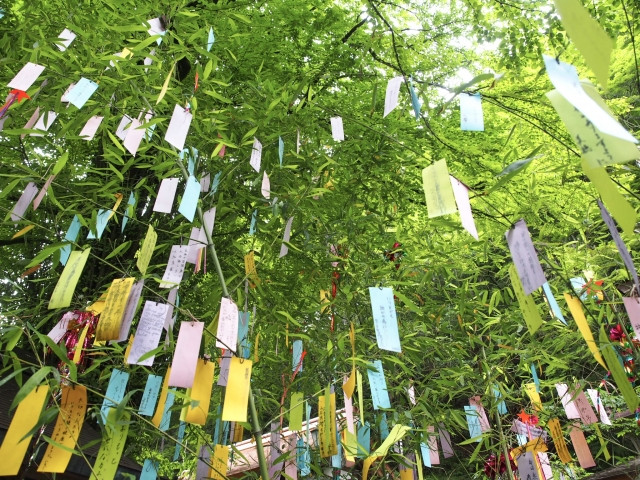
A bamboo tree adorned with many colourful strips of paper is the classic image of Tanabata. These paper strips are called 短冊 (tanzaku). A traditional Japanese Tanabata custom is to write your wish on a tanzaku and hang it on a bamboo tree to make a wish.
Generally only 5 colours of tanzaku are used. Blue, red, yellow, white and black are the traditional colours. However, blue may be replaced with green, and black with purple. These 5 colours have an important meaning in the concept of Yin and Yang. The colours are also used for carp streamers, windsocks, and sumo wrestling rings. They are believed to bring good luck.
In Sendai, which is famous for the Sendai Tanabata Festival, they also use symbolic origami decorations to make wishes:
-
Paper Cranes - family safety and longevity
-
Paper Purses - business prosperity
-
Paper Fishnets - fishing and harvest
-
Paper Garbage Cans - cleanliness and frugality
-
Paper Windsock - weaving and art skills improvement
※ Sendai Tanabata, “Decorations”
What do people normally wish for?
You can wish for anything, but many people wish to improve their skills. This is because the custom of making a wish on Tanabata was born out of a desire to become a skilled weaver like Orihime. Even today, many people wish for their skills to improve, like becoming better at craftwork, calligraphy, etc. There are also many people who wish for good health.
What is the significance of tying wishes to a bamboo tree?
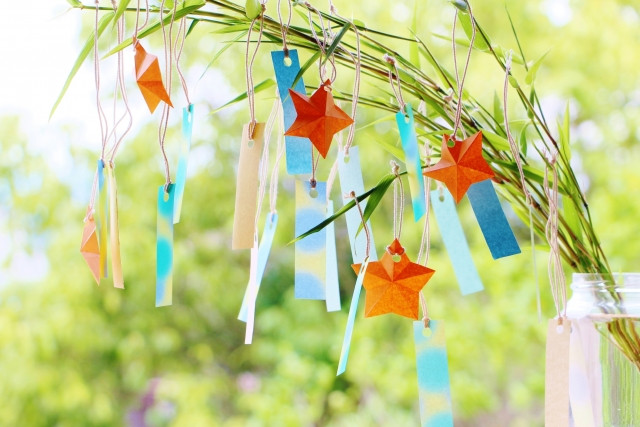
It is believed that Orihime will read our wishes. Since bamboo are tall plants, hanging tanzaku on them will make it easier for our wishes to reach Orihime beyond the stars. Therefore, it is said that the higher you attach your tanzaku, the better the chances of having your wish come true!
The custom of writing wishes on paper strips was started by Qi Qiao Jie (乞巧节). During Qi Qiao Jie, scholars would write wishes for improving their poetry and songwriting on the leaves of plants. Tanabata in Japan adopted this custom during the Edo period. As the number of 寺子屋 (terakoya; temple elementary schools before schools existed) increased, the custom spread and became the norm across Japan.
Tanabata Decorations
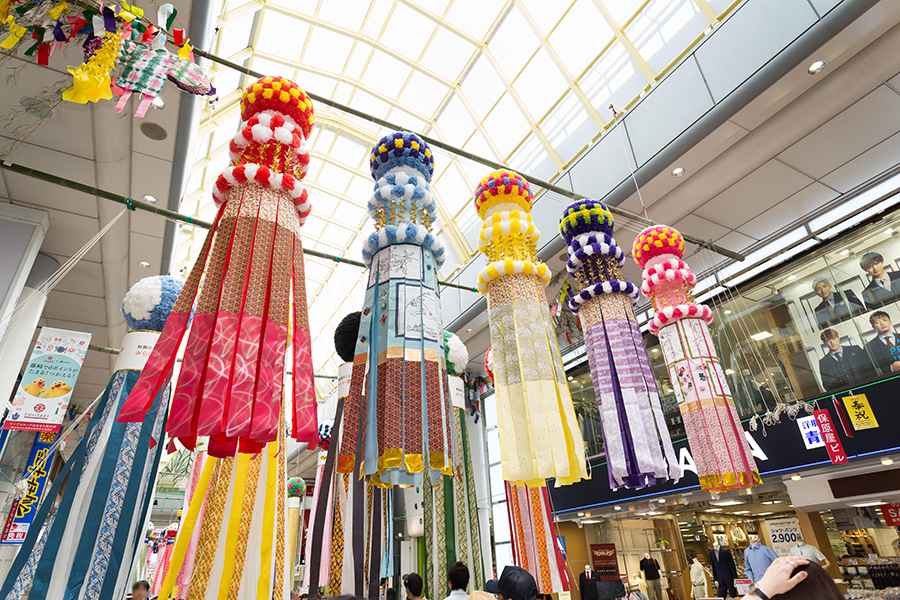
Source:仙台七夕まつり
Colourful decorations are another highlight of Tanabata. The most outstanding ones are 吹き流し (fukidashi) - windsocks made from colourful streamers. Some of them are topped with a 薬玉 (kusudama) - large paper ball. These are usually huge and brightly coloured making them hard to miss. You can see them at Tanabata Festivals, train stations, shopping streets (商店街 shoutengai), and even shopping malls.
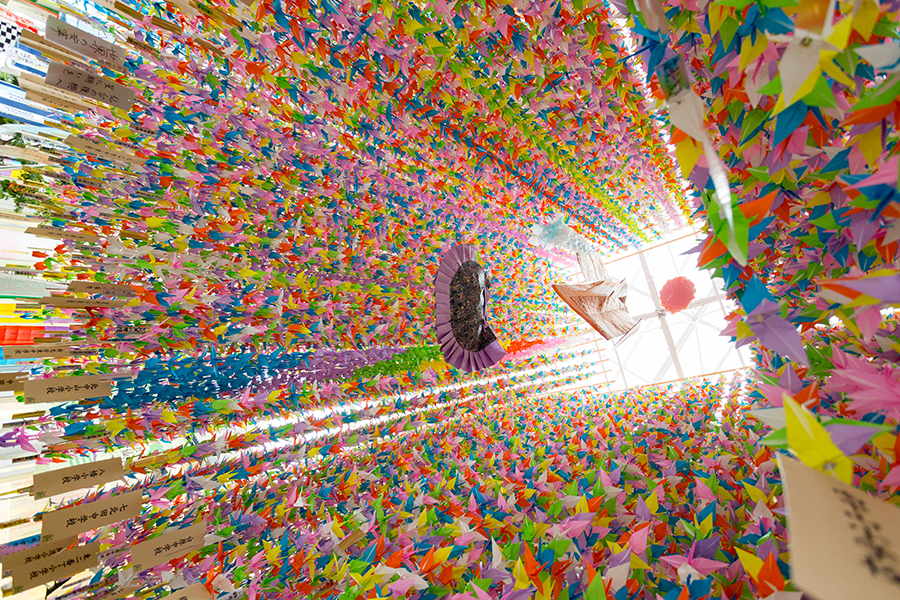
Source:仙台七夕まつり
Paper cranes are also used as decorations. In Japan, paper cranes recommend longevity. They are used as decorations to pray for a long life. Paper cranes hung on bamboo trees are common, but large-scale decorations consisting only of paper cranes can also be seen at Tanabata festivals.
Eat Soumen for Tanabata

Soumen is a traditional food for Tanabata. Eating soumen on Tanabata comes from an old Chinese legend.
Once upon a time, after the child of a Chinese emperor died on July 7th, he returned as a spirit bringing plague to the country.
Legend has it that when people offered sakubei (索餅), his favourite food, to prevent the spread of the plague, the illness was cured.
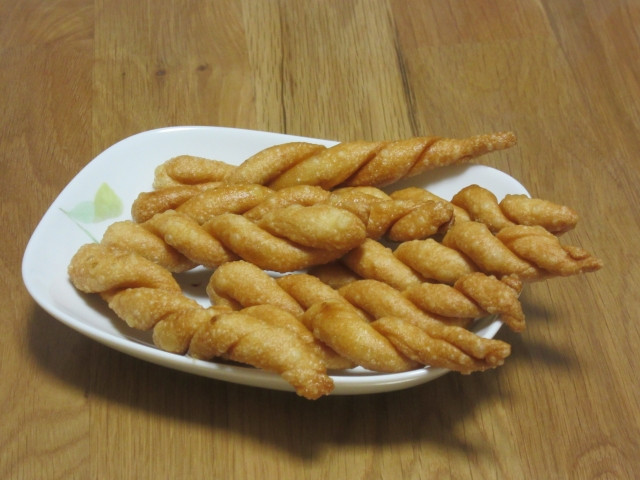
Sakubei is a traditional snack made by braiding thin threads of wheat, said to be the precursor of soumen. It is believed that the custom of eating soumen started as a way to pray for good health and well-being, drawing inspiration from this legend.
Stargazing for Orihime and Hikoboshi
The Milky Way is a band of stars that stretches across the night sky; it represents Amanogawa. As for the characters, Orihime, Hikoboshi and the Magpies have corresponding stars. Orihime is Vega (Lyra), Hikoboshi is Altair (Aquila), and the Magpies are Deneb (Cygnus). Going stargazing with a constellation board in search of the stars is one way to enjoy Tanabata. It is difficult to spot them in urban areas however, so travelling to the outskirts is recommended.
Popular Tanabata Festivals to Visit
When Tanabata comes around, many festivals are celebrated throughout Japan. We introduce some of them including Japan’s Three Great Tanabata Festivals (日本三大七夕祭り nihon sandai-tanabata-matsuri).
Some festivals are held in July, while some are in August to keep the tradition of following the lunar calendar.
Japan’s Three Great Tanabata Festivals (日本三大七夕祭り)
1. [Miyagi] Sendai Tanabata Matsuri 仙台七夕まつり
Sendai Tanabata is a traditional event that has been passed down since the era of feudal lord Date Masamune. The biggest draw of Sendai Tanabata Matsuri is their impressive Tanabata decorations which start from Sendai Station to Chuo-dori and Ichibancho-dori. On the night before, August 5, 2023, there will be a fireworks festival as well - 7:15 pm ~ 8:15 pm at Nishi Park.
Date: August 6 ~ 8 every year
Time: NA
Venue: Sendai city centre and surrounding shopping streets
Official Site
2. [Kanagawa] Shonan Hiratsuka Tanabata Matsuri 湘南ひらつか七夕まつり
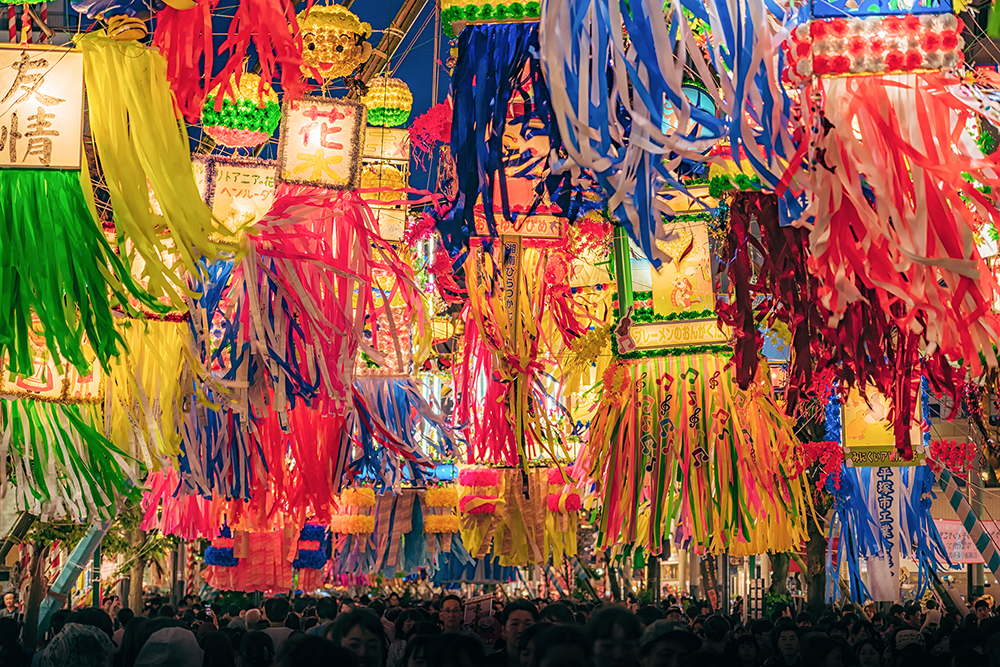
Shonan Hiratsuka Tanabata Matsuri is a 3 day event held at Kanagawa Prefecture’s Hiratsuka City in early July - the dates are not fixed every year but will always include the 7th of July. It is the biggest Tanabata Festival in the Kanto region. This festival also draws crowds with its large number of colourful bamboo streamer decorations. Stage performances, fun parades, music playing, and food stalls also make it a lively event.
Date: July 7 ~ 9, 2023 (Friday ~ Sunday)
Time: 10:00 am ~ 7:00 pm (until 6:00 pm on the last day)
Venue: Area surrounding JR Hiratsuka Station North Exit Shopping Street
Official Site
3. [Aichi] Anjo Tanabata Matsuri 安城七夕まつり
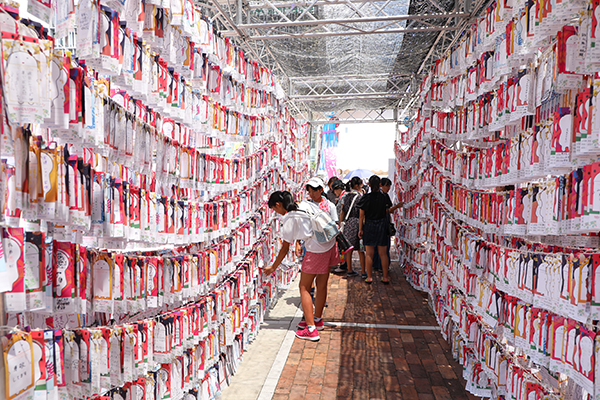
Anjo Tanabata Matsuri is celebrated at Aichi Prefecture’s Anjo City. It has the longest Tanabata decoration street in Japan, as well as the most number of tanzaku and wishes-related events. They even have an official mascot character きーぼー (kiiboo), a “wish spirit” that will bring your wish to the Gods in return for konpeito!
Date: August 4 ~ 6, 2023 (Friday ~ Sunday)
Time: 12:00 pm ~ 9:00 pm (Aug 4), 10:00 am ~ 9:00 pm (Aug 5), 10:00 am ~ 8:30 pm (Aug 6)
Venue: Surrounding area south from Anjo Station to Suehiro Shopping Street, and south along Hi-no-de Shopping Street till Minami-Anjo Station
Official Site
[Tokyo] Asagaya Tanabata Matsuri 阿佐谷七夕祭り
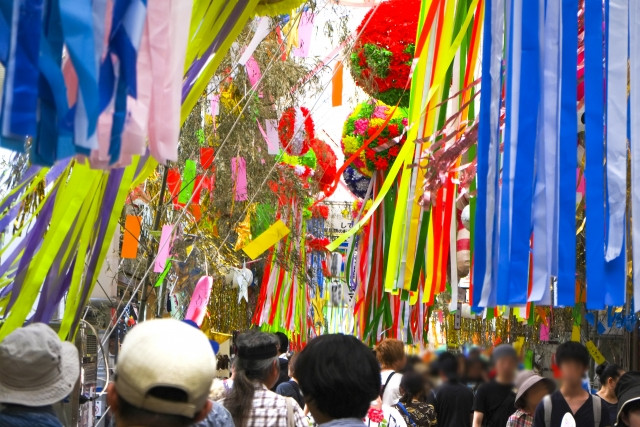
Sponsored by 8 shop associations around Asagaya Station, this festival has been held for more than 60 years and is a local traditional event. Huge and colourful Tanabata decorations and lanterns are displayed in the 700-metre-long arcade shopping street. Some of them are themed with popular characters, and you can walk through and under the beautiful decorations to enjoy them. There are also various stalls selling snacks such as takoyaki and shaved ice - typical summer festival foods!
Date: August 4 ~ 8, 2023 (Friday ~ Tuesday)
Time: 10 am to around 10 pm (※ ending time TBA)
Venue: Asagaya Station Pearl Center Shopping Street (Access from Asagaya and Minami-Asagaya Stations)
Official Site
[Saitama] Irumagawa Tanabata Festival 入間川七夕まつり
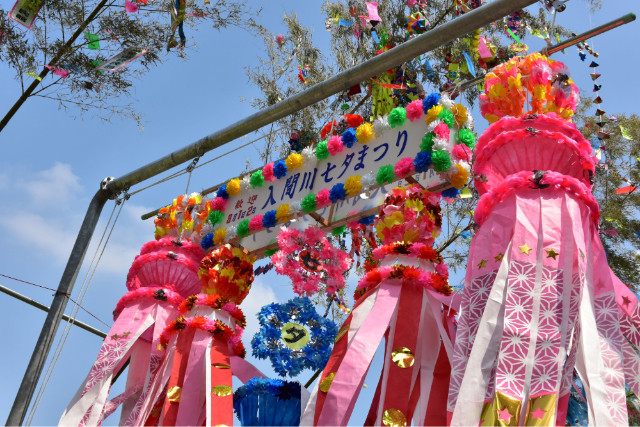
The Irumagawa Tanabata Festival is held at Sayama City in Saitama prefecture. It has a long history, said to be second only to Sendai’s Tanabata Matsuri, having been passed down since the Edo period. They boast of using only handmade Tanabata decorations. It is considered one of Kanto’s Three Great Tanabata Festivals. The highlight of the festival is the large-scale fireworks scheduled for July 29, 2023 7:30pm~8:00pm. Around 5,000 fireworks will be released in an attempt to recreate the Milky Way in the sky!
Date: July 29 ~ 30, 2023 (Saturday ~ Sunday)
Time: 12:00 pm ~ 9:00 pm (until 8:00 pm on the last day)
Venue: Surrounding area from Sayama City Station
Official Site
[Yamaguchi] Yamaguchi Tanabata Lantern Festival 山口七夕ちょうちんまつり
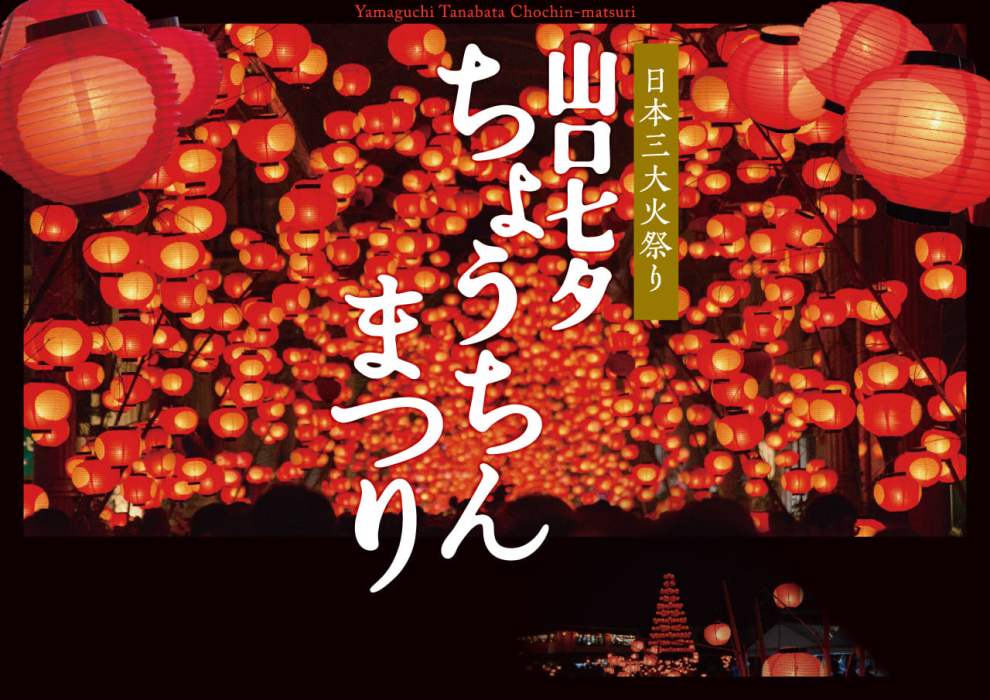
This traditional festival has a history of around 600 years from the Muromachi period. The festival inherits Daimyo Moriharu Ouchi’s custom of hanging Obon lanterns up high on bamboo trees to pay for the souls of ancestors. It became tied in with Tanabata during the Meiji period when Tanabata was fixed to be celebrated on August 7th. The highlight of the festival are the many red lanterns that are carried and also hung on bamboo stalks, some having 40 lanterns on a single bamboo tree!
Date: August 6 ~ 7, 2023 (Sunday ~ Monday)
Time: 6:30 pm ~ 9:30 pm
Venue: Yamaguchi City Central Shopping District area, Odona area, Yuda Onsen area
Official Site












.jpg)

.jpg)






















